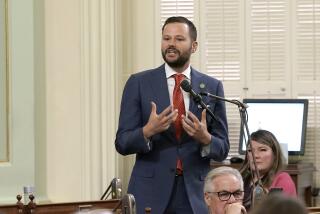Change to daylight saving time takes biggest health toll today
Today is one of the most dangerous days of the year -- and the onset of daylight saving time is to blame.
Though it began on Sunday, researchers have found the most acute effects occur on the first Monday after clocks spring forward. That’s when about one-fifth of the world’s population is forced to get up and go to school or work one hour earlier than their bodies are used to. (Unlike on Sunday, there’s no option to just sleep in.)
Losing a single hour may seem trivial in the scheme of things, but medical researchers have spent a good amount of time investigating some of the health consequences of switching to daylight saving time. Here are some of the things they have learned:
* Heart attacks are more likely in the first week after we spring forward. After examining nationwide data on hospital admissions to coronary care units in Sweden, researchers found that the incidence of acute myocardial infarctions was 3.9% higher than usual in the first week after daylight saving time took effect. The risk was even greater for people already taking heart medicines, according to a 2012 report in the journal Sleep Medicine.
* Traffic accidents are 8.6% more common on the first Monday of daylight saving time, according to an analysis of Canadian data that appeared in the New England Journal of Medicine in 1996.
* A more recent study based on 21 years’ worth of accident data from the U.S. concluded that there’s “a significant increase” in fatal crashes on that first Monday. Those findings appeared in a 1999 edition of Sleep Medicine.
* Workplace accidents are more common -- and more severe -- on the Monday after switching to daylight saving time, according to an analysis of mining injuries that used 23 years’ worth of data from the National Institute for Occupational Safety and Health. The findings were published in the Journal of Applied Psychology in 2009.
* The disruption to normal sleep rhythms was blamed for an uptick in suicides among Australian men in the first weeks after daylight saving time begins. “Small changes in chronobiological rhythms are potentially destabilizing in vulnerable individuals,” study authors wrote in a 2008 edition of the journal Sleep and Biological Rhythms.
* Increased sleepiness on the first Monday after switching to daylight saving time leads to a “dramatic increase in cyberloafing behavior” (i.e. surfing the Web when you should be getting work done), at least in Singapore, according to a 2012 study in the Journal of Applied Psychology.
* The transition hits hardest for night owls, and it can take up to three weeks for them to adjust to the new time, German researchers reported in a 2009 edition of Sleep Medicine.
* Perhaps the solution is to simply stay on daylight saving time all year. A 2004 report in the journal Accident Analysis and Prevention calculated that doing so would provide enough extra daylight to avert hundreds of fatal car crashes. Specifically, it said, 195 fewer drivers and passengers and 171 fewer pedestrians would die each year.
For more medical news you can use, follow me on Twitter @LATkarenkaplan and “like” Los Angeles Times Science & Health on Facebook.







